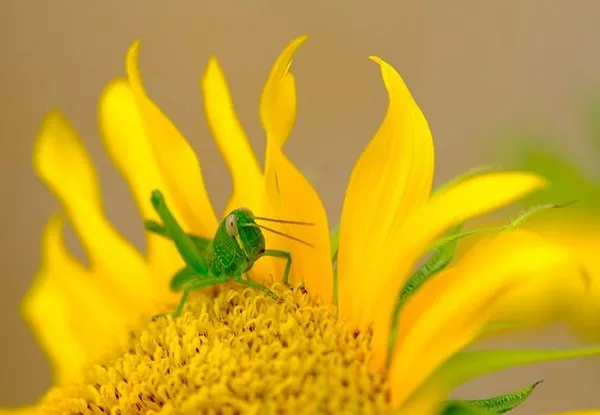Sunflowers, with their vibrant blooms and towering stems, are not only a symbol of summer but also a joy to cultivate. While many associate these cheerful flowers with outdoor gardens, starting sunflower seeds indoors can be a rewarding and strategic way to get a head start on the growing season. In this comprehensive guide, we’ll walk you through the step-by-step process of planting sunflower seeds indoors, ensuring a successful and bountiful harvest.
Selecting the Right Sunflower Seeds:
Before delving into the planting process, it’s crucial to choose the right sunflower seeds for indoor cultivation. Opt for varieties that are well-suited for container gardening and have a compact growth habit. Dwarf or bush-type sunflowers are ideal choices for indoor planting, as they are more adaptable to limited space and can thrive in pots.
Gathering Supplies:
To set the stage for successful indoor sunflower cultivation, gather the necessary supplies. You’ll need:
- Sunflower seeds
- Seed-starting mix
- Seed trays or small pots
- Transparent plastic wrap or a plastic dome
- Grow lights or a sunny windowsill
- Watering can or spray bottle
- Fertilizer (preferably water-soluble)
Preparing the Seed-Starting Mix:
Create a suitable growing medium for your sunflower seeds by mixing a high-quality seed-starting mix with perlite or vermiculite. This combination provides the right balance of aeration and moisture retention necessary for seed germination. Fill seed trays or small pots with this mixture, leaving about half an inch from the top to allow for easy watering.
Planting Sunflower Seeds:
Now that your growing medium is ready, it’s time to plant the sunflower seeds. Make small holes in the soil, about 1 to 1.5 inches deep, using your finger or a dibber. Drop one seed per hole and cover it gently with the prepared seed-starting mix. Water the trays or pots thoroughly but gently, ensuring the soil is evenly moist.
Providing Adequate Light:
Sunflowers are renowned for their love of sunlight, and indoor-grown seedlings are no exception. If you don’t have access to a sunny windowsill, invest in grow lights to provide the necessary light intensity for optimal seedling development. Position the lights about 2 to 3 inches above the seedlings, adjusting the height as they grow. Aim for 14-16 hours of light per day to mimic the sun’s natural cycle.
Maintaining Optimal Temperature and Humidity:
To encourage robust growth, maintain a consistent temperature between 65°F to 75°F (18°C to 24°C). Additionally, sunflower seeds thrive in a moderately humid environment. Covering the trays or pots with transparent plastic wrap or using a plastic dome helps create a greenhouse effect, preserving moisture and warmth for the developing seedlings.
Watering Wisely:
Overwatering can lead to damping-off disease, while underwatering can hinder germination. Strike the right balance by keeping the soil consistently moist but not waterlogged. Using a watering can with a fine spray or a spray bottle can help prevent disturbing the delicate seedlings. Monitor the moisture levels regularly and adjust your watering routine accordingly.
Transplanting Seedlings:
Once your sunflower seedlings have developed their first set of true leaves and are sturdy enough to handle, it’s time to transplant them into larger pots. Use a well-draining potting mix and space the seedlings at least 12 inches apart to allow for proper root development. This step is crucial for preventing overcrowding and ensuring each sunflower receives adequate nutrients.
Fertilizing:
Sunflowers are relatively heavy feeders, and as they transition from seedlings to mature plants, providing them with the right nutrients is essential. Begin fertilizing your sunflowers with a balanced, water-soluble fertilizer once they have established themselves in their larger pots. Follow the recommended dosage on the fertilizer package, adjusting as needed based on the specific needs of your sunflowers.
Hardening Off and Outdoor Planting:
Before transplanting your sunflowers into the outdoor garden, it’s crucial to harden off the seedlings. This process involves gradually acclimating the plants to outdoor conditions, such as sunlight, wind, and fluctuating temperatures. Start by placing the pots outdoors in a sheltered spot for a few hours each day, gradually increasing the time over a week. Once your sunflowers have acclimated, transplant them into the garden, spacing them according to the specific requirements of the chosen sunflower variety.
Conclusion:
Planting sunflower seeds indoors is a rewarding endeavor that allows you to enjoy these iconic blooms earlier in the season. By selecting the right seeds, providing optimal growing conditions, and diligently caring for your seedlings, you can cultivate healthy and vibrant sunflowers that will brighten your indoor space and, eventually, your outdoor garden. Follow these steps, and you’ll be on your way to a successful indoor sunflower growing experience, bringing a touch of sunshine into your home long before the summer sun takes over the skies.


